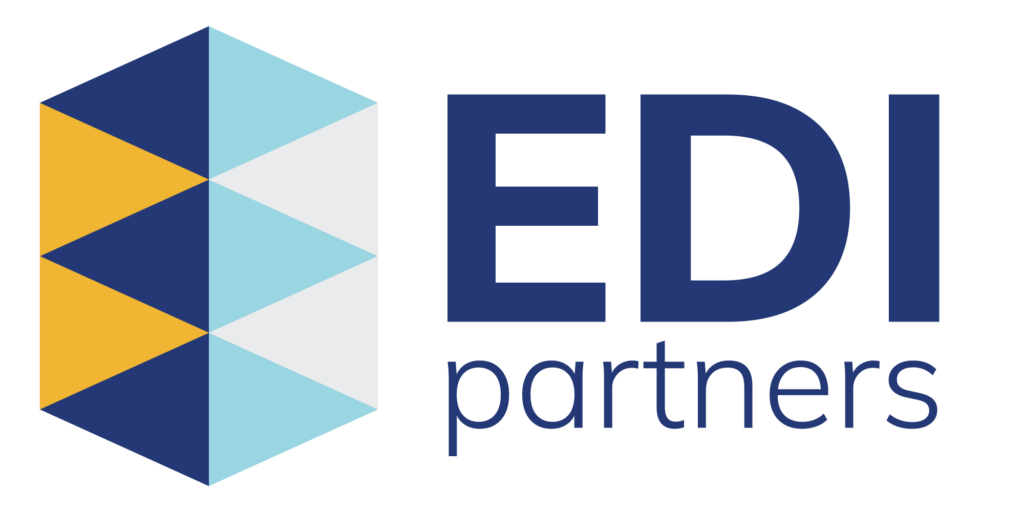In Brief
Considerations in choosing an EDI solution
- Identifying company needs and requirements for data exchange and security measures
- Comparing prices and features of different EDI solutions
- Integration with current enterprise resource planning (ERP) and accounting software
- Affordability, service provider background and industry expertise
Electronic Data Interchange (EDI) is a technology that enables the exchange of business information between computer systems in a standardized and automated manner. In today’s fast-paced business environment, EDI can play a critical role in improving the productivity of a company by streamlining processes, reducing errors, and improving efficiency.
One of the greatest benefits of EDI is that it automates many manual processes, thus, reducing the need for manual data entry and reducing the risk of errors. By automating operations, EDI helps companies to save time and resources, which can be redirected toward other areas of the business that need attention.
How Can You Choose the Right EDI Solution?
Choosing an appropriate EDI solution for your company’s needs may seem like a challenging task at first glance. There are certain important considerations to keep in mind to ensure you make the best decision possible. Identifying your organization’s unique requirements and demands should be your first priority.
At first glance, selecting an effective EDI solution for your company’s needs can appear like a difficult undertaking. To ensure you make the best decision, there are a few crucial factors to bear in mind. A top priority should be identifying your organization’s unique demands and requirements.
In this regard, you should think about the nature of the information you must disclose, the number of people with whom you must share it, and the security measures that must be put in place to safeguard it.
In addition, you need to compare the various price structures and features of different EDI solutions to choose a package that fits within your financial plan and achieves your long-term objectives. When deciding on an EDI solution, it’s also important to think about the end user’s perspective to make sure everyone’s needs will be met adequately.
What are Your Requirements?
When planning for EDI, it is important to identify the requirements of the system, including the type and volume of business documents that need to be exchanged, the type of data to be transmitted, and the frequency of these transactions. This will allow you to select the appropriate EDI software and establish a timeline for implementation.
Additionally, it will help you to identify which partners need to be included in the EDI process and how to ensure the secure exchange of data. It is equally important to consider any potential future changes that may need to be made to comply with changing regulations and industry standards.
Armed with this information, you can create a comprehensive EDI plan that will ensure the system meets your needs and the needs of your partners.
How Important is Integration?
It is vital to explore and determine the compatibility of a potential EDI solution with your current enterprise resource planning (ERP) and accounting software. The EDI solution’s user-friendliness and accessibility to technical support staff should also be taken into account. This will guarantee that your chosen EDI solution will work with your existing infrastructure and that you will have access to the required technical assistance for setting up and maintaining the system.
You should also make sure the EDI solution is affordable by learning everything you can about its related expenses. Taking these into account will help you choose the most appropriate EDI system for your business.
Consider a Reputable Service Provider
Investigating a potential EDI solution provider’s background and standing in the market is essential. To learn more about the provider’s service and support, testimonials from current and former clients are quite valuable. Checking the provider’s credentials is also essential to making sure they are really authorized to provide the services in question. Last but not the least, think about the provider’s industry connections and how much expertise they have with EDI.
Once you have considered these factors, you can shortlist potential EDI solutions and conduct detailed product evaluations. This may involve testing the EDI solution in your own environment, and seeking feedback from other organizations that have implemented similar solutions. Finally, make your final decision based on your detailed evaluations and ensure that the EDI solution meets your requirements.
What is Best for You?
Older EDI systems have become less efficient and perhaps obsolete as a result of continuously evolving technologies and the ever-changing competitive landscape. To stay ahead of the game, companies need to proceed with caution when selecting an EDI system. They may choose between two alternatives, on-site EDI and managed EDI solutions.
1. On-site EDI: An in-house EDI system is developed, managed, and maintained entirely within an organization’s own premises.
2. Managed EDI: For businesses that would rather not install or distribute software to all of their employees, managed EDI offers a turnkey EDI solution that is built and managed by a third-party service. Let’s take a closer look at both of these possibilities.

On-site EDI Solution
If a company wants to implement on-site EDI, it will need to make investments in both specialized EDI infrastructure and in-house teams who are equipped with the knowledge and experience necessary to ensure that the system runs smoothly and efficiently.
All EDI activities, such as the installation of the servers and other devices required to enable a complete EDI solution, are managed on the company’s premises under this strategy. In addition to this, teams need to be ready to quickly fix problems and disruptions to guarantee that business operations will continue to function without interruptions.
What Benefits Does On-site EDI Bring?
Since the advent of Enterprise Data Interchange, on-site EDI has been the standard method of implementation. Even though on-site EDI installations have gone out of favor due to the rising complexity of EDI regulations and worldwide supply chain links, these systems still have plenty to offer to businesses if they are properly managed.
- Independence without having to rely on another party
- Trained EDI experts who are well-versed in the inner workings of businesses
- Full command over all EDI data exchanges
- Internal management of vendor connections and company image
- Modifications to the system may be implemented instantly
- Customized services and commercial alliances for specific needs
The Cost of On-site EDI Solution
One major drawback of using EDI internally has always been the cost involved in such an undertaking. Investing in EDI infrastructure and hiring specialists have both contributed to rising expenses as EDI’s capabilities have expanded. Also, in-house EDI has to be flexible enough to keep up with the marketplace, which adds some unexpected expenses. These include:
- Maintenance, upgrading, and fix-ups
- Continuous monitoring of Electronic Data Interchange
- License renewal costs
- Servers and other equipment in an ever-changing architecture
Businesses may lose efficiency due to the time and effort spent on managing all of these factors. When managed well, however, the total control over the supply chain interactions that in-house solutions give may assist in supplier relationship management, which in turn assures profitable trade partnerships in the long term.
Managed EDI
When an organization uses the managed EDI deployment approach, a third-party service provider handles all aspects of EDI deployment, administration, and maintenance on their behalf. Businesses may avoid the expense of building their own EDI infrastructure by contracting it out to organizations with experience in the field.
These organizations will have access to teams of experts who have experience dealing with EDI and will be able to quickly get to work.
What Benefits Does Managed EDI Bring?
Managed EDI has become more popular in recent years due to the increasing complexity of today’s supply chains. For businesses without in-house EDI specialists, the availability of fully managed solutions that guarantee third-party management of all EDI components (mapping, maintenance, etc.) means greater convenience and productivity.
Managed EDI’s capacity to free up internal resources may pave the way for business expansion in other areas, and there are plenty of upsides to considering this strategy as well. Some of these are:
- Affordable, dedicated EDI expertise
- Third-party trade partner requirements
- Monitoring for connection difficulties
- Infrastructure investment cuts
- Up-to-date EDI system
- Agile EDI infrastructure
- Improved trade partner response
The Costs of Managed EDI
Managed EDI often works on a subscription basis, making it more affordable than other EDI options. However, the cost-effectiveness of managed EDI is not a given; poorly selected providers might introduce a variety of price-based hazards, such as:
- Unsuitable Electronic Data Interchange (EDI) procedures
- A lack of agency in the introduction of EDI
- Conspicuously unstated prices for things like technological upgrades and surveillance
- Completing lengthy procurements
Finding the correct partner and solution is essential for an EDI-managed service to be cost-effective. It might be challenging to locate such EDI partners who provide the upfront cost, individualized corporate support, and continued EDI handling necessary to provide a return on investment (ROI) in an EDI solution.
On-site or Managed EDI: Which is a Better Solution?
Each company has unique requirements and resources, so choosing between managed and on-site EDI systems may be difficult. Both offer advantages and disadvantages, and selecting one over the other will rely on different criteria, including a budget, skill level, scalability, and safety.
Managed EDI is a service where the provider handles both the setup and maintenance of the Electronic Data Interchange system. This is the best choice for companies that lack the manpower or resources necessary to handle their own EDI system.
It’s also a cheap alternative since it eliminates the requirement for widespread software deployment inside an organization. Managed EDI service providers like EDI Partners also give excellent levels of customer support and technical help, thanks to their extensive industry experience and knowledge.
However, with an on-site EDI setup, a team of in-house IT specialists is responsible for setting up and maintaining the EDI infrastructure. In-house solutions are ideal for companies that need extensive customization and control over their EDI system and have the personnel and resources at hand to administer the solution themselves. Furthermore, the data saved and processed by an on-premises EDI system is safer since the company has complete control over its sharing.

Conclusion
It’s up to each business and organization to choose what works best for their own situation and budget. When choosing an EDI solution, one must think about the price, expertise, scalability, and safety offered by the system.
Managed EDI may be the most practical and economical choice for small organizations with few internal resources and knowledge of the technology. On the other hand, an on-site EDI solution may be the better option for large corporations that need extensive configuration and management of their EDI infrastructure. Before making a final choice, it’s wise to consult an expert.
Maximizing the Value of EDI for Your Business
At EDI Partners, we strive to ensure the success of your company, just as much as our own. Our team of experienced EDI professionals are equipped to handle any scale or complexity of your EDI environment, ensuring stability, efficiency, and cost savings. Schedule a free consultation with us today.

